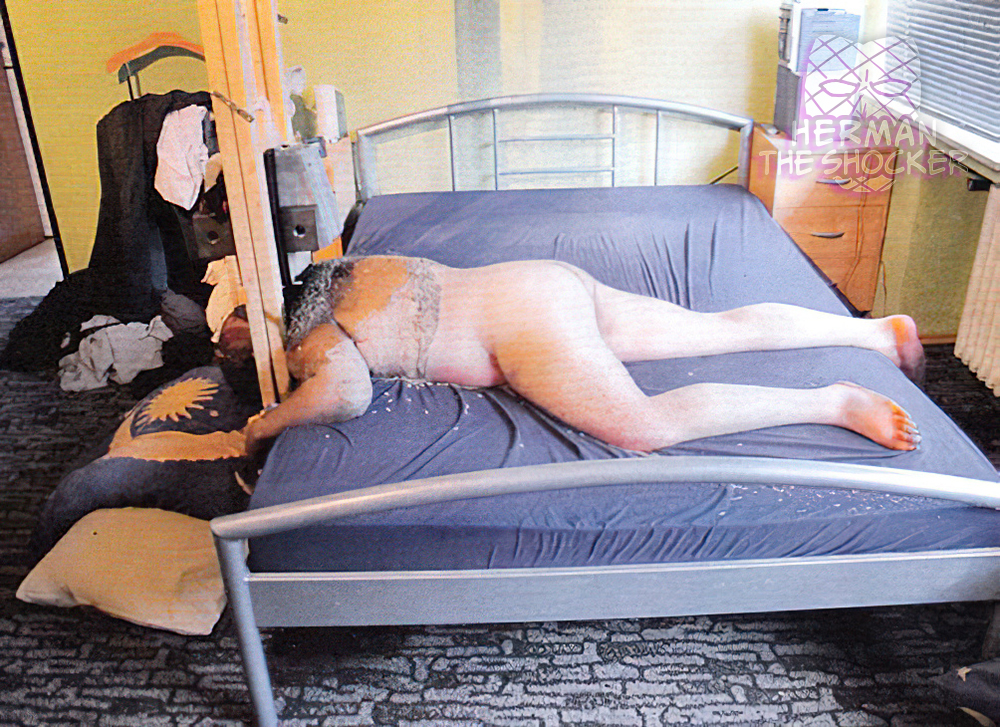Germany. In early September 2011, after a 2-week holiday, a 26-year-old man failed to show up for work as scheduled, prompting his brother to visit his residence. After nobody answered the door, he called the fire department, who broke open the apartment door, which was locked from the inside, and found the alleged tenant of the apartment dead in his bed. The body lay face down on the bed; the body was covered by a quilt. Next to the bed was a 245 cm (8 ft) high wooden construction resembling a guillotine, which was attached to the bed frame with tension belts and to the floor with screwed metal brackets.
A nylon rope was attached to a metal halyard over plastic pulleys, which was weighed down by approximately 30 kg (66 lbs) with paving slabs and steel weights. The head was almost completely separated from the body and was only connected to it by two narrow skin bridges.
A knife was found in the right hand of the corpse, which had apparently been used to cut the nylon cord of the guillotine. Unequivocal identification on site was not possible due to the advanced stage of decomposition. Subsequent testimonies from the deceased’s work colleagues showed that he had built the guillotine at his workplace. A judicial autopsy was ordered to determine the cause of death and to confirm the identity of the body.
Observed at the autopsy was the body of an approximately 175 cm (5’9) tall and 94.8 kg (209 lbs) heavy man in an advanced state of putrefaction, which particularly affected the neck and head area. The main autopsy findings were signs of a longer period of time with the corpse being infested with fly maggots and a subtotal separation of the head from the trunk between the 5th and 6th cervical vertebrae. In addition, blood inhalation were found in all lobes of the lungs. There were no indications of any significant internal diseases. For identification purposes, the dental status was recorded and compared with the available dental records. The presumed identity of the deceased could be confirmed in this way.
The cause of death was decapitation. Assessing the findings, especially the wound in the head and neck area, was significantly more difficult due to the advanced state of putrefaction with extensive maggot damage. The differentiation between ante and post-mortality of the wound based on the wound characteristics alone was rather difficult. However, there were signs of blood inhalation, suggesting vitality of the injury and at least minimal survival time after the neck was transected.
The death was deemed a suicide based on the findings by the investigating authorities (locking conditions, testimonies from work colleagues, autopsy findings), neither histological nor forensic-toxicological examinations were commissioned. The complex construction and attachment of the guillotine alone spoke for long-term planning of the suicide.
Only a few publications on suicide cases using a guillotine or guillotine-like constructions have appeared in recent decades. Complete or subtotal decapitations are very rarely observed within the large spectrum of different suicide methods. However, they aim to ensure that the attempted suicide is as “successful” as possible. Thorough planning of the suicide, which can be seen from the method, can also be evaluated against this background and also indicate a longer-lasting preoccupation of the deceased with the topic itself.
Latest posts










